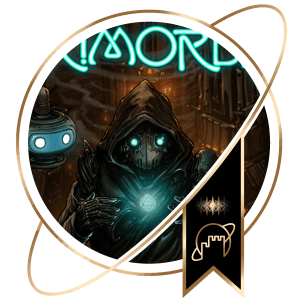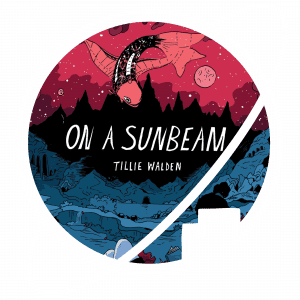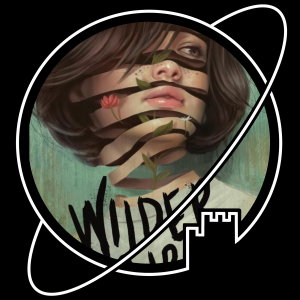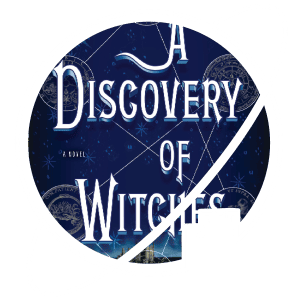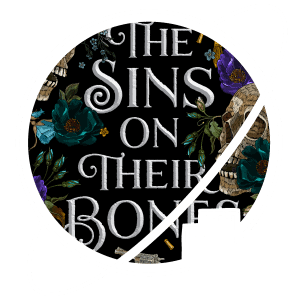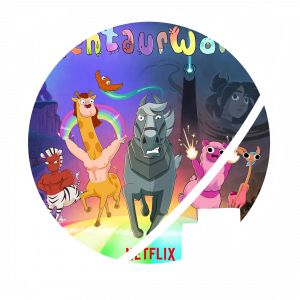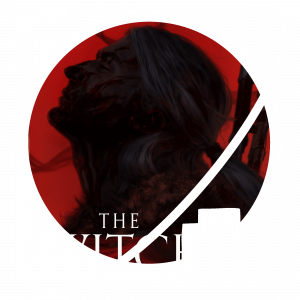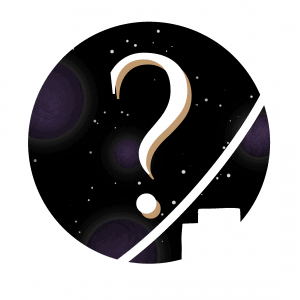Welcome to the Escape Velocity Collection!
We are an opinionated group of friends reviewing all sorts of fantasy and science fiction media. Don’t forget to get to know the curators and visit our curated Collection, where we discuss the stories that never cease to transport us to another world.
Will you escape with us?
LATEST POSTS:
- Comic created by Rich Burlew
- Published by Giant in the Playground
- First Aired on September 29th 2003
The story of Order of the Stick follows the story of a (not so ordinary) D&D adventure group traversing a lich’s dungeons and combating classic conventions of storytelling and Dungeons and Dragons. Hopefully, they won’t become responsible for the fate of the world…
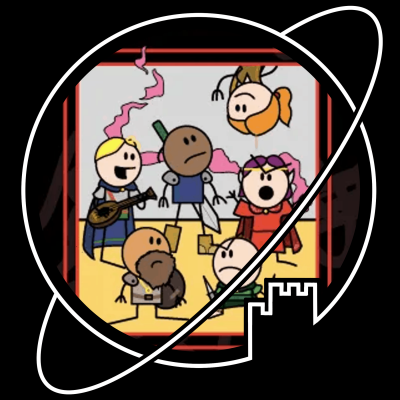

(This review relates to a story that’s still ongoing)
I’ve been following this story for over a decade, casually checking the Giant in the Playground website for updates each day. It’s kind of wild how far we’ve come.
Key recommended this web comic to me shortly after we started playing D&D within our group of friends. At first it was little more than a story full of lighthearted (meta) jokes – not all of them good – pertaining to D&D game mechanics and narrative structures, told by simple stick figure art. However, somewhere during the trip, the story became something more. Both plot and characters evolved, till eventually even the stick figure art got more elaborate.
The Order of the Stick contains a well-crafted plot that somehow even manages to retain the feel of a homebrew D&D campaign. The main characters might seem superficial at first, but each one of them gets an admirably deep arc interwoven with the plot. The worldbuilding is interesting, borrowing from real-life pantheons and classic fantasy tropes, and then mixed with some fairly original concepts.
I hesitate to say if the earlier strips of The Order of the Stick have aged well. At least the first hundred pages of the comic badly reflect what the story has grown out to be. That’s not to say these strips are without merit, for even here groundwork is being laid for later parts of the plot. I would say the story starts to pick up around page 250, with the storytelling getting really good from around page 700 and onwards.
Profound knowledge of D&D mechanics isn’t necessary to enjoy this comic. The story contains enough interesting elements to cater to lovers of epic fantasy and/or Sword & Sorcery also.
Tagged:
- Board game designed by Jason Harner and Matthew Ransom
- Illustrated by David Pietrandrea and Jesse Riggle
- Published by Brotherwise Games
- Published in 2017
- Dice-placing game, 2-4 players
- Playing time: 30-60 minutes
- Age: 8+
In Unearth, each player leads a group of delvers (represented by 5 dice of different types) in digging up the ruins of an ancient civilisation. The players take turns to roll their dice and compete with each other in order to claim the ruin for themselves. In the meantime, they are also busy collecting stones to build wonders and earning cards that can help to change the outcome of their dice rolls.


‘Bend-your-luck’ is a very apt term to describe this game: it is mostly based on rolling dice, but if you play your cards right (literally), you have a lot of influence on how the game plays out. It has quite original game mechanics but overall it is not too complicated. I really love the artwork and the design of the game itself: the colored dice and the hexagon shaped tiles make it look very good on the table. It’s a fun game that doesn’t require you to be too focussed, so it’s easy to play on a relaxed evening while chatting with friends or family.
See also:
Tagged:
- Tv-show created by Bryan Fuller and Michael Green for Amazon Prime Original
- Based on American Gods by Neil Gaiman
- Starring Ricky Whittle, Ian McShane, Emily Browning, Yetide Badaki and others
- Released in 2017
- 3 seasons
Just days before Shadow Moon is supposed to be released from prison, he finds out that his wife Laura has died in a car accident. On his way home to her funeral he meets a mysterious and enigmatic man who calls himself Mr Wednesday and who offers Shadow a job as his bodyguard. In the service of Mr Wednesday, Shadow finds himself drawn into a world of myths and legends. Not only does he discover there is an ancient war going on, he himself soon becomes complicit in this war.
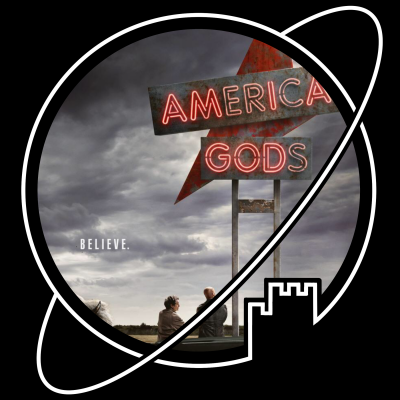

(This review relates to seasons 1, 2 and 3)
I am always a little weary when books I really love are adapted for the screen, and I am pretty sure I would have hated a movie adaption of American Gods. However, by turning it into a tv-show, the whole story and its characters have been given much more room to grow than they would have in a movie. To my own surprise I found myself actually really enjoying this series. The actors are fantastic, especially Shadow and Wednesday could not have been cast more perfectly. The makers of the show managed to find exactly the right balance between staying true to the book, and changing some elements to make it speak more to the current ‘zeitgeist’ (the book is 20 years old after all). I especially love the large role they have given to Laura, who is one of my absolute favorite characters in the series and has been given a much more interesting narrative than in the book.
My only hesitation in recommending this series is that I do not know what the experience would be like if you have not read the book first. The book itself is already pretty weird, and in the series they have leaned into this weirdness quite heavily and turned it into an almost surreal viewing experience. I really loved this about it, but without the context of the book you might need some patience before it starts to make any sort of sense. Perhaps consider starting with the book, which is what I would recommend in almost all cases anyway.
See also:
Tagged:
- Book written by Audrey Coulthurst
- Published in 2016
- Part 1 of Of Fire and Stars
Princess Dennaleia is betrothed to the prince of a neighboring kingdom to seal an alliance. As she does her best to learn the ways of her new home, something that proves to be hard enough by itself, she has to do everything within her power to conceal her magic abilities. After all, magic is strictly forbidden in her future kingdom.
Meanwhile, Princess Amaranthine – called Mare for short – cares little for the arrival of her sister-in-law. However, when tensions in the kingdom lead to an assassination, the two princesses quickly find they need each other to puzzle things out.
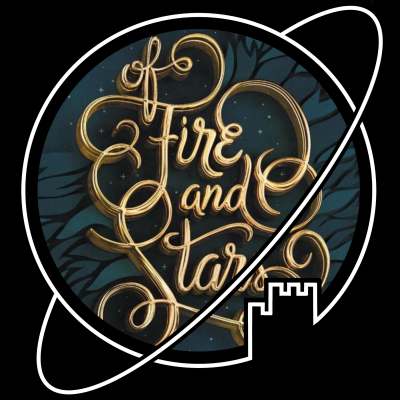

Of Fire and Stars is primarily a romance story in a pretty generic fantasy setting. Neither the worldbuilding nor the plot are very original, so those things are not what you should be reading this story for. I would recommend going in with the same expectations as when you watch a romantic comedy: you pretty much know what you are going to get when you start, but sometimes that can be just what you are in the mood for. The writing itself is decent and I liked the story well enough while I was reading it. However, once I had finished it I did not feel the need to pick up the sequel as well.
Especially for young adult readers who do not read a lot, I think this book can be a good place to start. I wish there was a longer list of other fantasy or sci-fi books featuring F/F romances that I could recommend, but sadly these are still somewhat hard to find. Some books that come to mind are Wilder Girls by Rory Power (although this book is quite a lot darker than Of Fire and Stars), and the graphic novels The One Hundred Nights of Hero by Isabel Greenberg and On a Sunbeam by Tillie Walden.

First of all, it should be said that this book is primarily a love story. The fantasy murder mystery plot and worldbuilding are quite simple, never reaching their full potential. This leaves the two female protagonists and their slow-burn relationship as the main driving force of the story. If you can’t seem to care for either one of the princesses or their romance, this book has little to offer you.
That said, I would say Of Fire and Stars is in no way a badly written (or even constructed) book. However, I think it is better suited for a younger public than an experienced reader, who’ll probably see all the plot twists and answers to mysteries coming from afar.
Dealing with themes concerning identity and independence, and also the fact that the story contains a F/F romance, makes that Of Fire and Stars is a perfectly fine addition to the fantasy genre.

I really wanted to enjoy this novel because of the queer main characters, but unfortunately it just didn’t really work for me. The plot is quite predictable, which I don’t mind at all if the writing is good. Unfortunately Of Fire and Stars doesn’t offer much more originality than the fact that it is a queer twist on a usually very straight trope.
It’s been quite a while since I read this book and I briefly considered rereading it for this review. However, I quickly realised that I didn’t really want to? Don’t get me wrong: I didn’t hate the book, I just didn’t really take anything from it the first time I read it, and I feel like my not wanting to reread it is probably as good an indication of how well (or poorly, I suppose) I enjoyed it as if I reread it and gave you a very in-depth overview of why it left me unphased.
If you’re desperate for an easy read and you like the idea of a queer fantasy romance, I suppose I can recommend it. But I wouldn’t go out of my way to read it, personally.

Boy.
This is the worst book I have finished, at least in the past five years, and maybe ever. The prologue captivated me, and then it was one big ride of irritation turned to frustration turned to anger to the end. If it wouldn’t have been on a list for a book club, I would have tossed this right out of the window a few chapters in.
The premise of the book is all about the twist: a princess is married off to a prince, but then falls in love with his sister instead. A bit of a gotcha, but a welcome variation on an old tune. Except everything else about this book is just… awful. There is no other way to put it.
The fantasy setting is so generic there is literally nothing to say about it. For some reason, half the book is about horses instead of the plot.
The main characters act like – and are – spoiled children. Their parents put reasonable restrictions on them. Everytime the children break the rules, they find themselves in mortal danger and end up needing to be saved or surviving by a hair’s breadth. Somehow, the parents are still the bad guys for trying to keep them inside.
The sister that our main character falls for is a literal princess who lives in a literal palace and gets offered a seat on the literal ruling council while the peasants break their backs in the fields to support them, but she throws a temper tantrum and embarrasses her family because her little brother and not her will inherit the throne – and this is somehow a great injustice to her.
There is a murder investigation going on, but because there are literally so few characters in the book it is immediately obvious who did it.
The characters are horrible. The writing is childish. The plot makes no sense. The fucking unnecessary focus on horses. Even writing this review is slowly filling me with rage over this book again.
For me, this book embodies a lot of what I dislike about a sub-section of the modern fantasy genre. It is reduced to a quaint, rainbows-and-unicorns Disney-fairy-tale setting, thinned down to a veneer, a tasteless sauce to spread over your uninspired YA love triangle story.
At best, this is fantasy for 13-year-old-horse-girls (and that’s being really generous). At worst, this is a blatant cash grab, a horrible book that is sold to the woke crowd on the premise that it is gay – but really, it isn’t worth the paper it is printed on.
Tagged:
- Video game developed by Ustwo Games
- Released in 2014
- Platforms: Android, iOS, Windows Phone
Monument Valley is a simple puzzle game where you lead a princess through an impossible, Escher-like landscape. By moving platforms and bridges, you guide her through the beautiful and mysterious ruins of an ancient civilisation.


I love this game. It is incredibly beautiful, and together with the music and sound effects it makes for an almost meditative experience. The puzzles are fun and there are some real surprises, but they are never so difficult as to become frustrating. It’s a great game to take your mind off of things and to simply sit back and enjoy the experience.
See also:
Tagged:

- Collected on:
- Developed by 2K Games
- Directed by Ken Levine
- Published by 2K Games
- Published in 2007
- First-person Shooter, single player
- Playing time: 11-12 hours
- Platforms: Microsoft Windows, Xbox 360, Xbox One, Playstation 3, Playstation 4, Mac OS X, iOS, Nintendo Switch
“Rapture was a place unlike any other. Away from prying eyes, deep on the ocean floor, business magnate Andrew Ryan built his ideal city. He picked artists, scientists and industrialists to help him build the society of his dreams, where no man was limited by “parasitic” government. However, the city soon crumbled as unregulated “genetic enhancements” known as plasmids drove inhabitants of the city to madness. Now it is 1960, and one could only wish that Rapture were deserted. Instead, giant guardians roam its halls, trailed by little girls who loot corpses. The former fortune seekers scavenge the halls, killing to survive. Through audio logs, the story slowly unfolds as you fight your way through the desolate underwater city.”
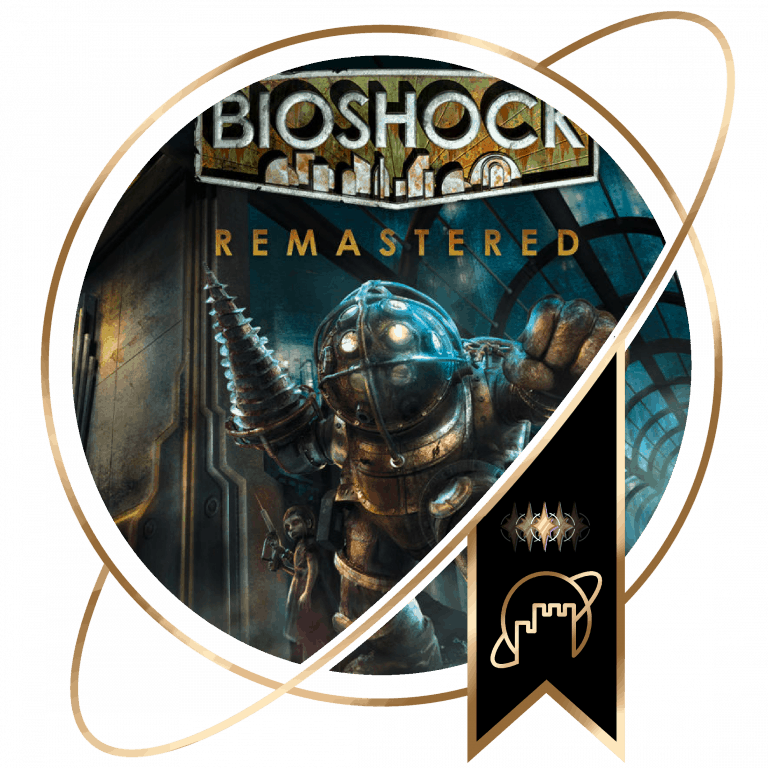
Welcome to this in-depth, spoiler-free discussion of the video game BioShock, which our curator Lotte has added to the Escape Velocity Collection, a series of items that we believe represent the absolute peak of what the speculative genre has to offer.
I, Peter, challenged Lotte to defend her addition to the Collection – why should we all drop what we are doing and pick up a controller to go play BioShock?
Defended By

Lotte
Versus

Peter
To start off, I would like to ask, when did you first play BioShock and why did you fall in love with it?


I first played BioShock after taking over Matt’s xBox 360, about six years ago? I was hesitant to play it because I’m not a huge fan of shooters. I associated them with games like Call of Duty and didn’t think they could actually have a story and be, you know… good (sorry). I remember being absolutely mesmerised by the atmosphere of the game. It’s absolutely terrifying (at least for someone who hates the ocean, and when asked what scares them would answer with the rather specific “fast zombies”), but it’s also absolutely beautiful. I also just remember it being lots of fun to play.
Story and World Design
It is our intention to give as little of the story away as possible, but as always, we can’t avoid spoilers for the first hour or so of gameplay.
Your plane having crashed somewhere in the middle of the ocean, you swim through the burning wreckage towards the nearest piece of land, a lighthouse on a small island. Inside the lighthouse, an ornate staircase leads down to an underwater station where you board a bathysphere, a small submersible that takes you to Rapture, a city built at the bottom of the sea.
But the moment you arrive in Rapture, you realise all sorts of things are wrong. The city is making water. It’s normal inhabitants have died or left. A mysterious substance that allows instant genetic modification has imbued the remaining inhabitants with strange powers, but also taken control of their bodies. Dangerous, half-mad addicts now prowl the leaking corridors. When a stranger contacts you over the radio… well. A friendly voice in a world like that? The rest of the story, you’ll have to experience yourself.
So, Lotte, how did you feel the first time you looked out of the porthole of the bathysphere and saw Rapture emerge out of the depths?


Like I said before, I was absolutely mesmerised, and I still am whenever I start the game.The game environments are stunning. A lot of thought has gone into the world building here. The setting is incredibly eerie, but it’s very easy to imagine what the city of Rapture might have looked like in its prime. A big reason for this is that the game is not just visually interesting. The sound design on this game is phenomenal. There’s old-timey music playing, and as you explore the depths of the city you’ll occasionally hear an advertisement playing over the speaker system. It’s one thing to make a game with scary monsters, but it’s another thing entirely to make a game that would have been creepy and interesting even without the fascinating plot that it also has.
Whilst we may disagree on the graphic execution (more on that later), I think we are of one mind when it comes to the world design. BioShock has a beautiful, very distinctive Dieselpunk aesthetic and alternative history setting that set it apart from similar shooters that often go with a rather generic sci-fi theme.
What is more, unlike in most video games, there is some interesting social commentary in BioShock – was that something that drew you in as well?


Ok look. I’m a pretty smart person, but I have a real hard time reading between the lines. I didn’t fully get all of the social commentary the game was making until I read the tie-in novel. In retrospect, I do really enjoy picking up on those aspects of the game now that I know to look out for them. One thing I personally find very interesting is thinking about potential inspirations for the game. I once read on a forum that Andrew Ryan – the game’s main antagonist – may have been inspired by Walt Disney. When I first read that I thought it sounded ridiculous, but having since learnt more about his original plans for E.P.C.O.T., I have to admit that it’s not such a strange idea after all. I’d definitely encourage people to go into the game with the knowledge that there is social commentary in it, because it absolutely adds another layer to the whole experience. Also maybe check out Defunctland’s video on E.P.C.O.T, while you’re at it.
You mention a tie-in novel – is that worth a read as well?


Honestly, it really was! I happened to find it at the thrift store, so of course I had to buy it. It’s been a while since I read it, but I remember being quite impressed. It tells the story of how Rapture fell into disrepair, and gives some more background on who Andrew Ryan is. Perhaps I wouldn’t recommend it to someone who hasn’t played the games, but for anyone who has and would like some more background, I’d say it was a pretty enjoyable read.
Gameplay
BioShock is a first person shooter with a sideboard of RPG-like elements and progressions (which, admittedly, is common nowadays but wasn’t so much when the game was initially released). Most of the character progression is in the genetic modification-magic powers described above, but unfortunately you remain relatively limited in the amount of ‘spells’ that you can equip at one time.
Because of the underwater world the story is set in, most of the levels consist of relatively confined areas (and at times, literal tunnels). Firefights take place over short distances, and in the easier modes it is often possible to easily cross the distance to your enemies to smack them with your wrench. Dying doesn’t set back progression too much, but especially on the higher difficulties, conserving ammunition becomes a real concern.
With that background, were there any elements of gameplay that you particularly enjoyed?


This was the first shooter that I played all the way through. I’ve played some really old stuff as a child, but never from start to finish, or even a whole level at a time. For me, BioShock was the perfect gateway game. Like you say, dying never sets you back too far, and you’re rarely in a level where you are unable to hide or run away somehow. I did enjoy using the plasmids to, you know, kill people. However, I wouldn’t say that they necessarily made the game more fun for me. I can imagine it being an interesting addition for someone who has played a lot of First Person Shooters and wants to do something a little different from just shooting people with a gun the whole time, and it absolutely works in the story of the game. It’s really cool to see how they integrated part of the game play not only with the current story of the game, but also with the story of how the world came to be. The plasmids also allow you to do things like open doors and operate machinery, and it’s a nice touch to be able to see that what you are using as a weapon actually serves a purpose in the “real world” and wasn’t just created for you to kill things with. Sure, video games are fiction, but it’s always nice to imagine that the things you’re using would still exist in the world even if someone hadn’t dropped you in there to do a bunch of killing.
Maybe I’m reading between the lines a bit too much here, but it almost feels as if the gameplay was never really the primary attraction for you?


Now that I play games more often, I definitely tend to go for story over gameplay. Still, compared to some First Person Shooters, BioShock’s gameplay does offer interesting ways of engaging with the world around you. On top of that, you can’t ignore the fact that a game lives or dies on its gameplay. A game can have an oh so interesting story, but if it sucks to play, you’re just not going to play it.
Age
I had to google this, but BioShock came out in 2007(!) – that means the game is over half as old as I am. Luckily for us, a remastered version was released in 2016, but even that game is now five years old. Have you played the game recently, and how does it stack up against its modern competitors?


I first played the game a couple of years ago, before the remaster came out. I think the “worst” thing about the original version is that it feels rather clunky? Still, I didn’t have any trouble with it back then. I’m currently playing BioShock 2 on my Switch – yes, I bought the complete collection again, instead of playing a new game for once. I’d say the game stacks up pretty well, especially graphics wise. BioShock is, thankfully, quite stylised. It’s definitely not over the top, but it’s also definitely not meant to look like the real world. This means that it actually aged quite well. It’s a bit of an established fact that “realistic” games age quite poorly, and I definitely don’t think BioShock falls into that category.
You know what, I’m going to give you a little pushback on that. I’ll agree that it has a great visual style – it has that beautiful Dieselpunk aesthetic, and I agree that because it straddles the divide between realistic and cartoonish, it hasn’t aged nearly as badly as it could have. But I found that the dark and labyrinthine game world combined with less-than-stellar graphic execution can result in a rather disorienting experience. In many locations, it is simply not clear what you are looking at, be it a door or a window or a wall panel or something else entirely. I wasn’t so bad when I first played it, but even I found it somewhat dizzying when I picked it back up. The remastered version manages to wipe some of that away, but I would still argue that the game looks its age – is that recognisable for you at all?


Gosh, I find this difficult to answer. As I mentioned, this is the first Shooter that I’ve picked up, so it can’t have been too bad. Then again, I didn’t have anything to compare it to, so maybe it was. I’ve recently bought the complete BioShock Collection with my Nintendo Switch Lite, and while I do struggle with the game slightly, I have to admit that it’s definitely not the graphics that make it difficult. As long as you don’t set your screen brightness too low, the game is definitely not too hard to navigate. There is often an arrow indicating where you need to go, as well. What I do struggle with is controlling the game using joysticks. My first playthrough was on xBox and it went fine, but for some reason I’m having a real difficult time aiming with the Switch’s joysticks. I’d recommend playing it on PC if you can, but my PC version keeps crashing so I gave up after a while. Please don’t ask me how many consoles I’ve bought this series for. Or just take it as an indication of how good they are, that I would keep spending money on them.
Ok fine. I’ve owned:
- BioShock 1 on xBox 360
- BioShock 2 on PC (bought second hand)
- BioShock 2 on xBox 360 (also second hand, the collector’s edition – please note that I no longer had the console when I purchased this game)
- BioShock: Infinite on xBox 360
- BioShock: the complete collection on Nintendo Switch
- Rapture: the BioShock tie-in novel by John Shirley
You know what? Not even that bad of a list.
Well, that’s one advantage of the game’s age: it has become available on a whole host of platforms over the years, and even your shitty old laptop is likely to run it decently well! And the disorientation I just mentioned… it adds to the horror experience!

Conclusion
Perhaps we should start working towards a conclusion. I’ve been a bit critical, but I want to repeat that I loved BioShock as well. We’ve established that BioShock is a game with an absolutely phenomenal eerie horror setting and a great atmosphere. We disagree a bit on whether it looks its age,, but I think we do agree that it’s worth giving a shot for the story and the chills down your spine, if not the thrilling gameplay. Is that a fair assessment? Is there anything you would add?


Absolutely. I would add that if you’re planning on buying the game, you might as well buy the complete collection while you’re at it. The second game is very similar to the first, but the third installment, BioShock Infinite, also has beautiful music and interesting characters, but it takes place in the opposite of Rapture. Infinite takes place in a city in the clouds, and it is exactly as atmospheric as Rapture, but a little less scary. If you loved BioShock, you’ll love BioShock: Infinite as well.
That’s it for now folks! Go give BioShock a shot if you haven’t already, and I’m sure we’ll be back for another discussion on a BioShock game in the future…

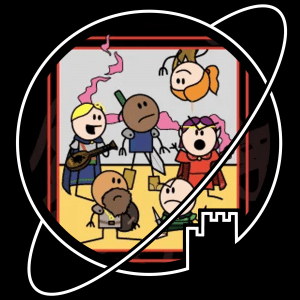
Review: The Order of the Stick – Rich Burlew
The story of Order of the Stick follows the story of a (not so ordinary) D&D adventure group traversing a lich’s dungeons and combating classic conventions of storytelling and Dungeons and Dragons.
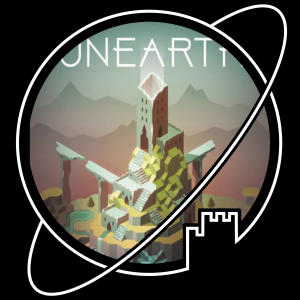
Review: Unearth – Brotherwise Games
In Unearth, each player leads a group of delvers (represented by 5 dice of different types) in digging up the ruins of an ancient civilisation.

Review: American Gods – Amazon Prime Video
Shadow finds himself drawn into a world of myths and legends. Not only does he discover there is an ancient war going on, he himself soon becomes complicit in this war.

Review: Of Fire and Stars – Audrey Coulthurst
Part 1 of Of Fire and Stars – Princess Dennaleia is betrothed to the prince of a neighboring kingdom to seal an alliance. When she meets her fiance’s sister, princess Amaranthine, the two girls together start investigating a secret that could threaten the kingdom.
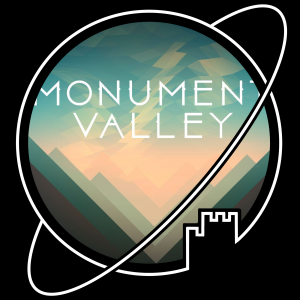
Review: Monument Valley – Ustwo Games
Monument Valley is a simple puzzle game where you lead a princess through an impossible, Escher-like landscape. By moving platforms and bridges, you guide her through the beautiful and mysterious ruins of an ancient civilisation.
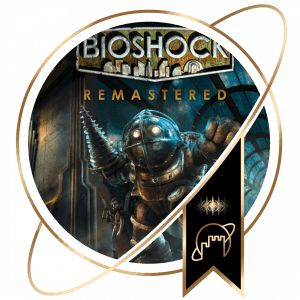
Collected: Bioshock by 2K Games
COLLECTION: The once magnificent Underwater City of Rapture is deserted, and as you make your way through its dangerous corridors, you slowly discover what happened to what was once Andrew Ryan’s Utopia.

